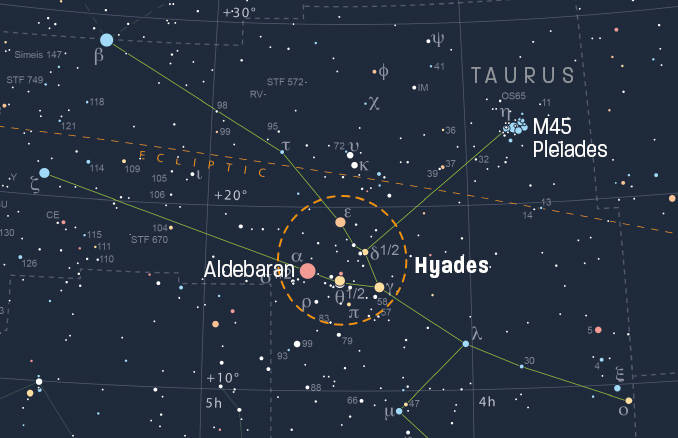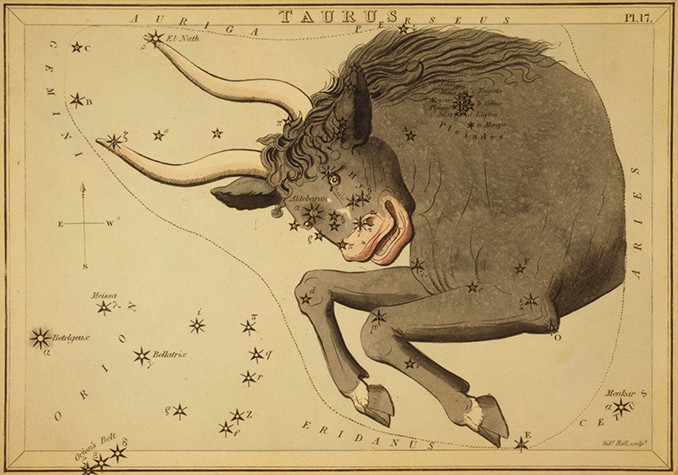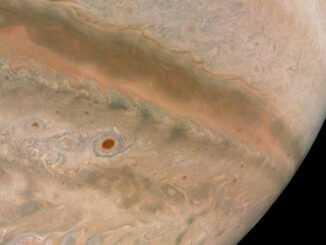
The outline of the Hyades open star cluster in Taurus is one of the best naked-eye landmarks in the winter sky. It’s brightest stars form into a ‘V’- or wedge-shaped-asterism, or star pattern that’s an easy spot around 25 degrees to the upper-right (north-west) of Orion’s famous ‘Belt’.
First-magnitude Aldebaran, a K-class giant star that exudes a noticeably orange-red hue, dominates the asterism though it lies too close to us (65 light years) to be a member of the open cluster. It’s happy line-of-sight coincidence gives observers a great celestial signpost to the Hyades should it be needed.

The Hyades, also catalogued as Caldwell 41, Melotte 25 and Collinder 50, is the closest open cluster to our Solar System at a distance of 153 light years, near enough to be accurately measured by parallax. Around 200 stars are believed to populate the Hyades, which formed about 625 million years ago.

Ultimately, the Hyades will over the eons lose its stars to gravitational interaction within the cluster itself and dissipate into interstellar space. Recent observations by the Gaia spacecraft suggests that this process is being speeded up the gravitational influence of a massive and unseen structure in our Galaxy, which astronomers suspect could be a dark matter sub-halo.
The Hyades’ brightest stars are five of those in the ‘V’formation, namely namely gamma (γ, magnitude +3.65), epsilon (ε, +3.53), delta¹ (δ¹, +3.77), and finally, theta (θ) Tauri, a double star of components + 3.84 (θ¹) and +3.40 (θ¹) separated by 5.62 arcminutes. The Hyades spans 4 x 3 degrees, making it perfect for framing in a humble pair of binoculars binoculars.




